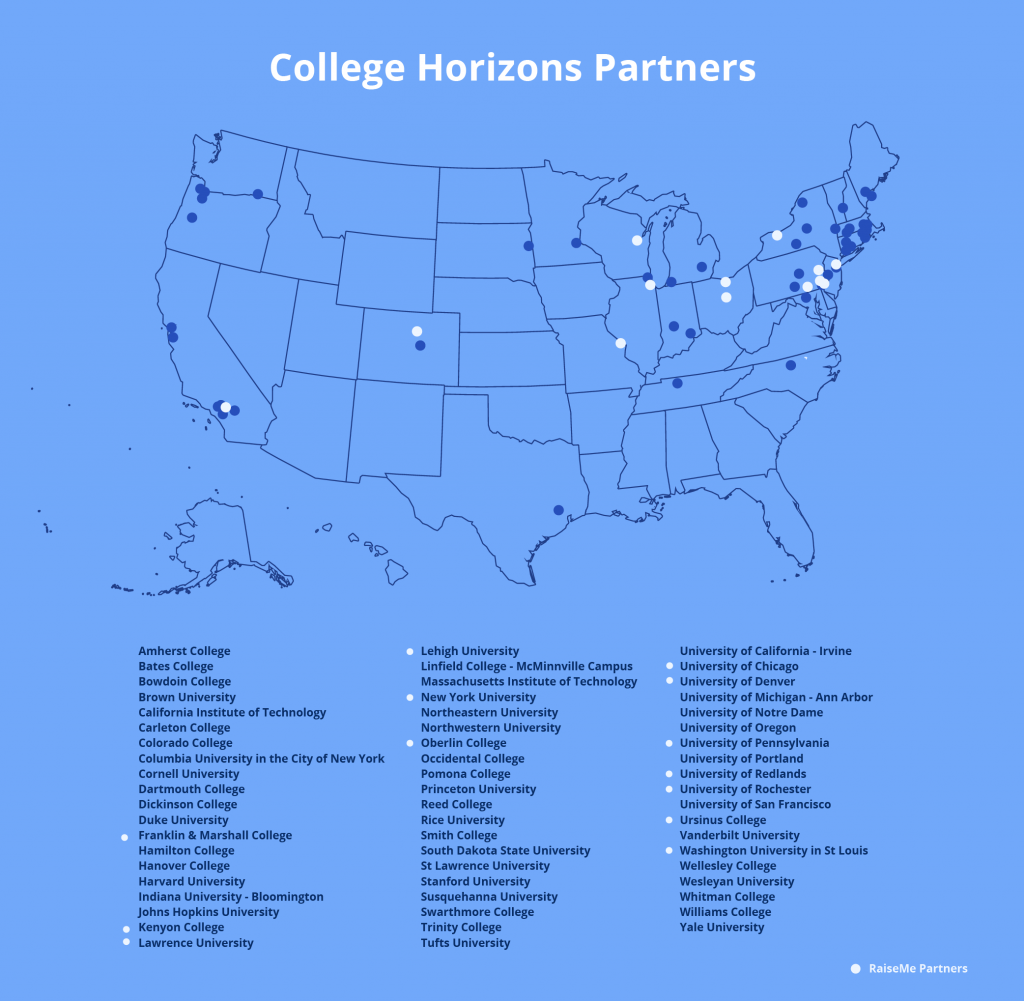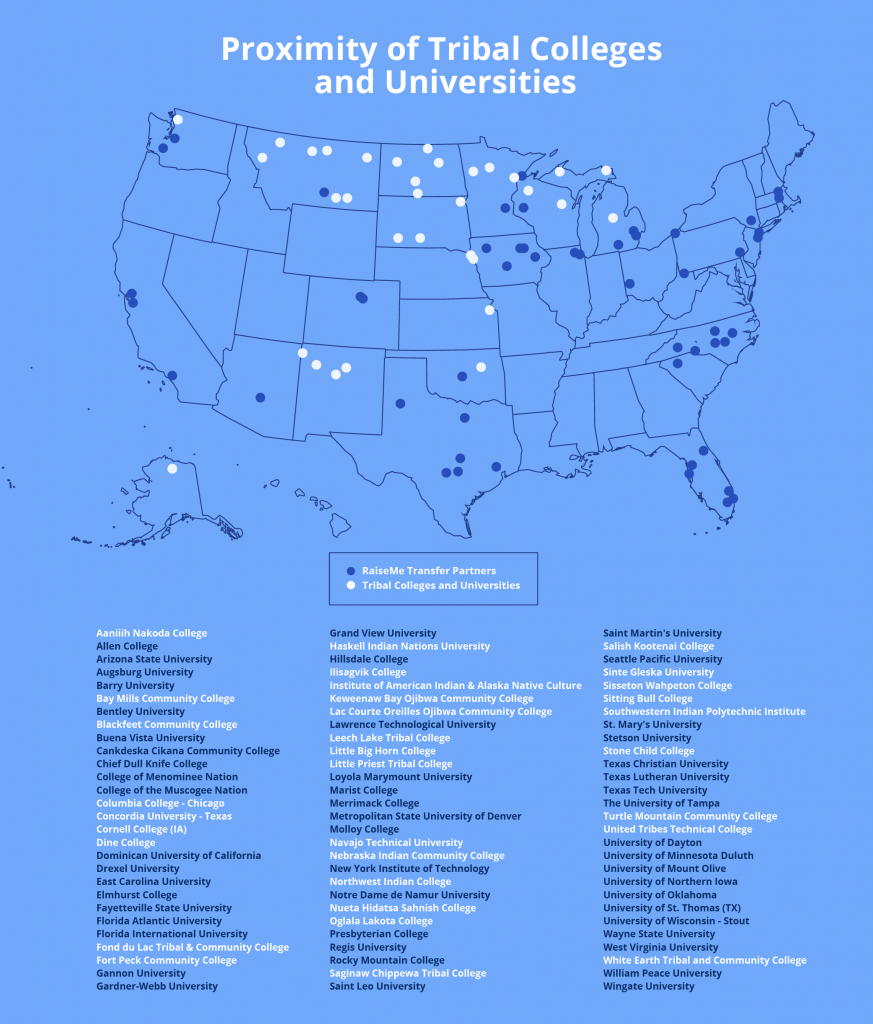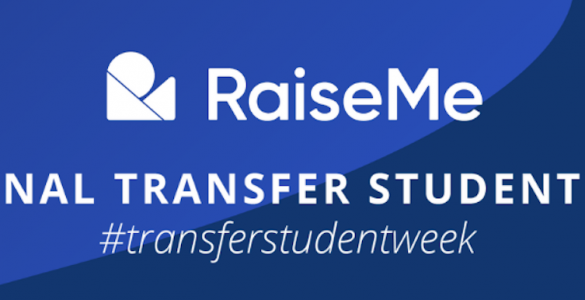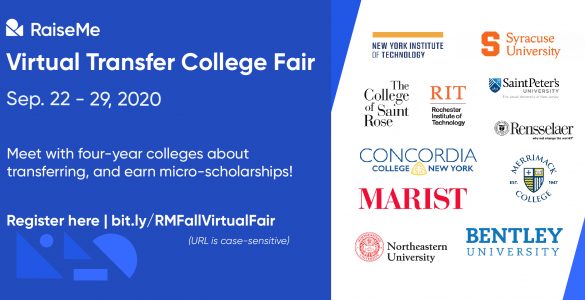Curricular Ideas to Observe National Native American Heritage Month
Learn about resources and organizations that support Native students this National Native American Heritage Month.
Historically, access to college for America’s Indigenous peoples has been fraught with barriers. From geographic to socioeconomic to societal factors, degree attainment has been kept out of reach for many Native American people. To illustrate this point, this statistic from the “Status and Trends in the Education of Racial and Ethnic Groups 2018” report demonstrates this alarming gap:
“In 2016, the total college enrollment rate was higher for Asian young adults (58 percent) than for young adults who were of Two or more races (42 percent), White (42 percent), Hispanic (39 percent), Black (36 percent), Pacific Islander (21 percent), and American Indian/Alaska Native (19 percent). From 2000 to 2016, total college enrollment rates increased for White (from 39 to 42 percent), Black (from 31 to 36 percent), and Hispanic young adults (from 22 to 39 percent) but were not measurably different for the other racial/ethnic groups during this time period.”
https://nces.ed.gov/pubsearch/pubsinfo.asp?pubid=2019038
This is just one report of many that underscores the disparity in educational outcomes for Native students. To learn more, we recommend the following reading:
- The Dropout/Graduation Crisis Among American Indian and Alaska Native Students
- Teach for America, One Day Magazine: Why are Native Students Left Behind?
- The Nation: Why America is Failing Native American Students
As educators, we have an obligation to reflect critically with students about the legacy of our institutions, notably whose histories are shared in our textbooks, and whose are omitted. National American Indian Heritage Month provides an opportunity to educate ourselves, not only on the state of education for Native American students, but also on highlighting some of the many organizations doing the work to support those students in their path to higher education degree completion.
Programming in High School
While there are many organizations, both regionally and nationally, that do great work to provide educational support for Native students, one that we’d like to highlight is College Horizons. Their mission is to bolster college access for American Indian, Alaska Native, and Native Hawaiian students and their main program for high school students is a pre-college summer program.
“Students work with college counselors and college admissions officers in a five-day “crash course.” The individualized program helps students select colleges suitable for them to apply to, get admitted to, and receive adequate financial aid. Students research their top 10 schools; complete college essays, resumes, the Common Application, and the preliminary FAFSA; receive interviewing skills and test-taking strategies (on the ACT and SAT) and financial aid/scholarship information.”
http://www.collegehorizons.org/Default.aspx?shortcut=about
To participate in the program, interested American Indian, Alaska Native, and Native Hawaiian students in their sophomore or junior year can apply online here. College Horizons partners with 45-50 colleges and universities around the country who send admissions officers to the workshop to provide one-on-one mentorship for the college admissions process. Currently, fourteen of those institutions are also Raise Me partners and one, the University of Rochester, awards a micro-scholarship for participation in the College Horizons program. Below, you’ll find a map of the universities that partner with College Horizons, with the ones that also partner with Raise Me highlighted.

The American Indian College Fund
In addition to college planning support in high school, there are a handful of nonprofits that address the transition to college as well as provide support through college graduation. For anyone considering the experience of Native students in higher education, a great resource is the American Indian College Fund (AICF). AICF invests in a number of different strategic programs, with much of their funding earmarked for Tribal Colleges and Universities (TCUs) and scholarship programs for American Indian students. The lion’s share of their work delves into thought-leadership and advocacy for American Indian communities, and they’ve produced a number of useful guidebooks for students at various stages of their educational journey.
“Native Pathways: A College-Going Guidebook” gives specific guidance for how to navigate the college admissions process as a Native student. The guide is a useful reference for educators serving Native and non-Native students alike, as it highlights specific considerations Native families have to navigate that are distinct from their white peers. The situations described illustrate the barriers to higher education that exist for minority students, ones that we should not only be aware of, but consider ways to dismantle in each of our own spheres of influence.
In addition to K-12 education support, a huge focus of the American Indian College Fund is not only degree attainment, but the experience Native students have in higher education. Their thought-leadership in the space has resulted in the report “Creating Visibility and Healthy Learning Environments for Native Americans in Higher Education.” The report is no doubt a call-to-action for colleges and universities serving Native students, and should also be a topic of critical conversation for the educators and mentors who are working together to achieve educational equity for all students. The executive brief of the report makes plain the task at hand:
“Most Americans have little to no knowledge about Indigenous peoples. It is this invisibility that leads to a college access and completion crisis among Native American students. When a student is invisible, his or her academic and social needs are not met. This leads to students feeling alienated and alone, derailing their matriculation and the realization of their dreams and potential.”
https://collegefund.org/presidents-blog/creating-visibility-and-health-learning-environments-for-native-americans-in-higher-education/
As educators and advocates, what can we do to have Native voices and stories represented in our classrooms, offices, and places of learning and community? In what ways does our educational system render some invisible, and what can we do collectively to combat that? At Raise Me, we believe in the importance of fostering a dialogue with students to address these questions and develop a line of inquiry for students to consider their place in a broader system. Use National American Indian Heritage Month as an opportunity for shared learning, committing to the discovery of some of the stories our history books have yet to adequately address. One place you might start is with AICF’s Creating Visibility report, which you can read in full by following this link.
For students, we have a few recommended readings for critical thinking:
- Book: Bury my Heart at Wounded Knee
- Article: Thanksgiving for Native Americans, Four Voices on a Complicated History
- Article: How a Native American Resistance Held Alcatraz for 18 Months
- Video: The Standing Rock Resistance and our Fight for Indigenous Rights
- Social Media: @_illuminatives, a nonprofit initiative designed to increase the visibility of Natives in American society.
- Additionally, we were fortunate to have Faith ‘Singing Snow Lily’ Johnson, a Native student and a Raise Me user, share her experience going to high school in New Jersey. Please take a moment to read her powerful story!
Tribal Colleges and Universities
The first Tribal College was founded in 1969 by the Navajo Nation. Galvanized by the Civil Rights Movement, Navajo Community College (now Dine College) was incorporated to provide an accessible and affordable option in higher education for the Navajo Nation people. Today, there are 35 Tribal Colleges and Universities (TCU), and to be designated as such, three criteria have to be met:
- The institution is tribally chartered, meaning founded by a Native American nation
- The majority of the board of the college is Native American
- The majority, 51% or more of the student body, is Native American
A key aspect of a TCU is that Native traditions and culture are embedded in the core curriculum taught at the institution. To that end, TCUs are a leader in Indigenous research and have spaces and faculty dedicated to the preservation of Native languages and heritage.

Above is a map of the 35 TCUs in the United States alongside the Raise Me college partners that participate in our community college transfer program. The majority of TCUs offer associate degree programs (23 of the 35 institutions) and the option is available to students at those institutions to transfer and earn a bachelor’s degree. Raise Me’s transfer program offers students enrolled in any community college to bank micro-scholarships while progressing to their associates degree, and then cash-in on those tuition funds when they transfer and enroll in a participating 4-year institution.
As you can see above, many of our four-year partners are located near two-year TCUs – we see this as a great opportunity for those TCU students to learn more about nearby universities and find an affordable transfer pathway. In fact, there are currently students earning on Raise Me at eight TCUs! If you’re a community college educator, we’d love to continue the conversation. There’s a suite of resources and support we can provide to help you help your students fulfill their degree aspirations. To learn more about our community college partnerships and our transfer platform, follow this link.
At the heart of it all, we at Raise Me believe that educational equity will take concerted effort from every angle to get right. When access and opportunity for all is truly achieved, we see a future that looks dramatically different for our society. Our work as educators, mentors, and advocates is to first acknowledge the ways in which the educational system we inherited grants access to some, and denies opportunity to others. When we can look at those structural barriers in the face, we can work together to dismantle what doesn’t work, and to build a system that’s empowering for all the students in our charge. We hope you’ll join us in considering the ways we can further promote access to educational opportunities in the Native American community.
You may also like

National Transfer Student Week 2020: Celebrate With Raise Me!
Join Raise Me in celebrating National Transfer Student Week October 19th-23rd. This is a week to celebrate our students, connect them with resources, and to...

Join Raise Me’s Virtual Transfer Fairs: September 2020
During Raise Me’s Virtual Transfer Fair, community college students can earn micro-scholarships for visiting with colleges, right from home. Students: we know it has...

Raise Me: Everything Educators Need To Know for Back-to-School and More
A comprehensive overview for getting your high school students started with Raise Me.

